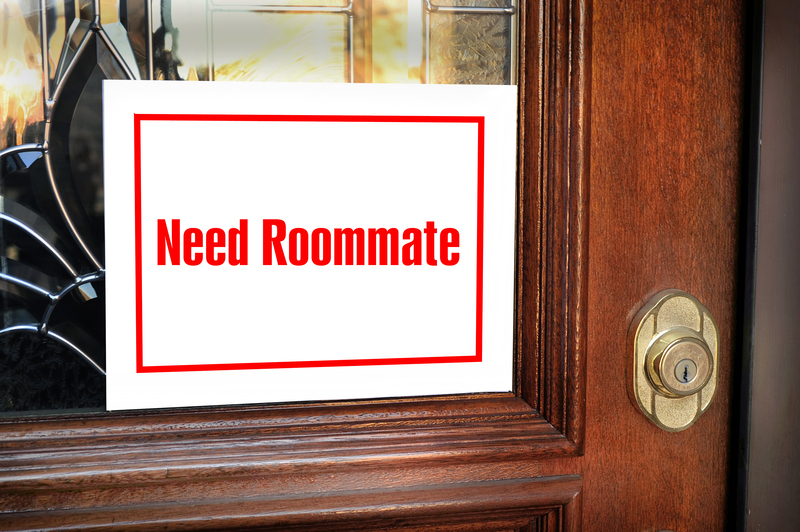Navigate the Complex World of Piano Moving with Ease
Posted on 11/06/2025
Navigate the Complex World of Piano Moving with Ease
Moving a piano is no ordinary task. With their immense size, delicate components, and often sentimental value, pianos demand special care and expertise during a move. This comprehensive guide will help you navigate the challenging world of piano moving with confidence, covering everything from selecting the right movers, understanding costs, preparing your instrument, and ensuring a smooth transition.
Why Piano Moving is a World of Its Own
Pianos are exceptional musical instruments--masterpieces of engineering and craftsmanship. Moving them safely is not comparable to shifting ordinary household items. Here's why:
- Size and Weight: Grand pianos can weigh up to 1,200 pounds, while upright pianos often exceed 300 pounds.
- Fragile Design: Hundreds of sensitive components--strings, hammers, soundboard--are vulnerable to jolts and impact.
- High Value: From antiques to family heirlooms, pianos carry immense emotional and monetary worth.
- Risk of Damage: Incorrect handling can cause costly harm to both the instrument and property.
If you wish to avoid heartbreak, injuries, and financial loss, proper planning and hiring professional piano movers isn't optional--it's essential.

Types of Pianos and the Challenges They Present
Understanding your piano's specific type will help you navigate piano moving challenges more effectively. Here's a rundown of common types:
Upright Pianos
- Spinet and Console: Compact but still heavy; maneuvering through tight spaces is tricky.
- Studio and Full Upright: Larger and heavier--often require special equipment for stairs or narrow doors.
Grand Pianos
- Baby Grand: Weigh between 500-600 pounds, with an awkwardly shaped body and fragile legs.
- Concert Grand: The largest of all--professional assistance is absolutely critical here.
Digital and Hybrid Pianos
- Though lighter and less fragile than acoustics, these still require careful handling to protect electronic components.
Each piano type comes with unique quirks and vulnerabilities--which is why a one-size-fits-all approach never works.
The Step-by-Step Guide to a Hassle-Free Piano Move
Let's break down the entire process so you can navigate the complex world of piano moving smoothly:
1. Assess the Piano and Map the Route
- Measure the piano's dimensions (including height for uprights, and length for grands).
- Check the weight (consult the manufacturer or search online if unsure).
- Plot the moving path: hallways, doorways, staircases, freight elevators, and vehicle access.
- Identify obstacles: low ceilings, tight turns, uneven floors, or fragile surfaces.
2. Gather Appropriate Tools and Supplies
- Piano dolly: Specially designed to support the weight and shape of the piano.
- Moving pads and blankets: Essential for protecting the finish and structure.
- Heavy-duty straps and ramps: To maintain control and simplify navigation, especially on stairs.
- Screwdrivers, pliers, moving gloves: For minor disassembly or handling sharp edges.
3. Protect Both Piano and Property
- Wrap the entire piano in moving blankets, securing them with tape or stretch wrap.
- Remove loose parts: music stands, casters, or fragile decorative elements.
- Cover floors and door frames with protection to prevent scratches.
4. The Moving Process
- Lift carefully and evenly: Never drag a piano across floors--always lift or roll using proper equipment.
- Use teamwork: Coordinate with at least two to five people depending on piano type.
- Staircases demand extreme caution: Use ramps or piano boards; never attempt alone.
- Secure the piano in the moving truck: Lock in place with straps to prevent movement.
5. Unloading and Placement in the New Location
- Reassess the route to the piano's final spot--preparation and protection remain just as important.
- Unwrap and reassemble any removed parts.
- Allow the piano to acclimate to its new environment before tuning (sometimes a few weeks are needed).
DIY Piano Moving: A Risky Venture?
Should you move a piano yourself? Let's weigh the pros and cons:
- Pros:
- Cost-saving--no need to pay professionals (unless damage occurs!)
- Immediate scheduling
- Cons:
- High risk of personal injury--back strains and crushed fingers are common
- Major potential for property or piano damage
- Insurance rarely covers DIY damage
- Lack of necessary equipment or experience
For all but the smallest digital keyboards, hiring professional piano movers is the best way to navigate piano moving safely and efficiently.
Finding and Choosing Professional Piano Movers
Expert piano moving companies have the experience, skills, and specialized equipment needed to protect your instrument and your home. Here's how to choose the right team:
What to Look for in a Piano Moving Company
- Specialization: Ensure they regularly move pianos--not just general household movers.
- Insurance Coverage: Ask for proof of liability and cargo insurance that covers your piano.
- Local Reputation: Check online reviews, ask for references, and verify their track record.
- Transparent Pricing: Get a detailed estimate in writing; beware of hidden fees.
Questions to Ask Before Hiring Piano Movers
- How many pianos do you move each year?
- Have you handled my piano's make/model before?
- What protective measures do you use?
- How do you handle large obstacles, stairs, or tight spaces?
- What is the claims process if damage occurs?
What to Expect: Piano Moving Costs & Factors
The cost of piano moving can vary widely, depending on several key factors:
- Piano type and weight: Larger and heavier pianos require more manpower and specialized equipment.
- Distance: Local vs. long-distance piano moves can greatly impact pricing.
- Obstacles: Stairs, narrow doors, or lack of elevator may add surcharges.
- Timing: Moves during peak times or weekends may cost extra.
On average, local piano moves can range from $150 to $600 for uprights and $400 to $1,500 for grands. Long-distance or interstate moves can cost several thousand dollars. Always request a custom quote based on your unique situation.
Ensuring a Smooth and Stress-Free Piano Move
Comprehensive preparation is the secret to navigating the complex world of piano moving without hiccups:
- Schedule your move well in advance--especially for busy summer months.
- Communicate special requirements to movers--such as stairs, historic or delicate pianos.
- Clear paths in both the original and new location.
- Take photos of your piano before the move for insurance purposes.
Special Considerations: Stairs, Tight Spaces, and Historic Instruments
- Multiple flights of stairs: May require more movers, special boards, or even crane services for large grands.
- Very old or antique pianos: Insist on movers with restoration experience and additional insurance.
- Tight city apartments: Sometimes, doors or balcony windows need removal for safe access.
After the Move: Piano Care and Tuning
Moving exposes any piano to vibration, jostling, and changes in temperature and humidity. Here's how to help your piano recover:
- Rest Your Piano: Allow it to settle for at least two weeks in its new environment before tuning.
- Hire a Professional Piano Tuner: Have an expert restore acoustical alignment.
- Inspect for Damage: Check legs, pedals, finish, and sound for unexpected issues. Report problems to your moving company's insurance promptly.
Long-Term Care Tips
- Keep your piano away from heating vents, fireplaces, exterior walls, and direct sunlight to avoid damage.
- Maintain consistent humidity levels (ideally between 40-45%) to protect the soundboard and action.
- Schedule regular maintenance and tune-ups.
Navigating Specialized Piano Moves: International, Concert, and More
The world of piano moving contains even more complexity when it comes to:
- International Relocations: Require crating, climate control, and customs paperwork.
- Concert & Touring Pianos: Need exacting care, staging, and expert reassembly at the venue.
- Unusual or Custom-Built Pianos: Specialists may need to design custom transport solutions.

Key Takeaways: Navigate Your Piano Move with Confidence
- Moving a piano is a specialized process that requires unique expertise and equipment.
- Assess the specific challenges your piano and your property pose ahead of time.
- Professional piano movers offer peace of mind and protection for your valuable instrument.
- Don't skimp on preparation, communication, or aftercare.
Are You Ready to Navigate the Complex World of Piano Moving?
Whether you're moving an upright across town, a grand to a concert hall, or an heirloom across the country, understanding the intricacies and choosing the right help can turn a daunting task into a smooth experience. Take the time to plan, hire qualified movers, and protect your piano every step of the way. Your instrument--and your ears--will thank you.
Frequently Asked Questions about Piano Moving
Is it worth hiring professional piano movers?
Absolutely. The risk of injury and costly damage far outweighs the expense of hiring trained experts.
Can regular movers move a piano?
Only if they have specific piano-moving experience and equipment. Always check first!
How long does a typical piano move take?
Most local moves take 2-4 hours, but larger instruments or complex situations may require longer.
Will moving a piano throw it out of tune?
Yes--plan on tuning after the move once your piano has acclimated to its new home.
Ready to schedule your piano move or need a consultation? Contact expert piano movers today to ensure your prized instrument receives the care it deserves!







